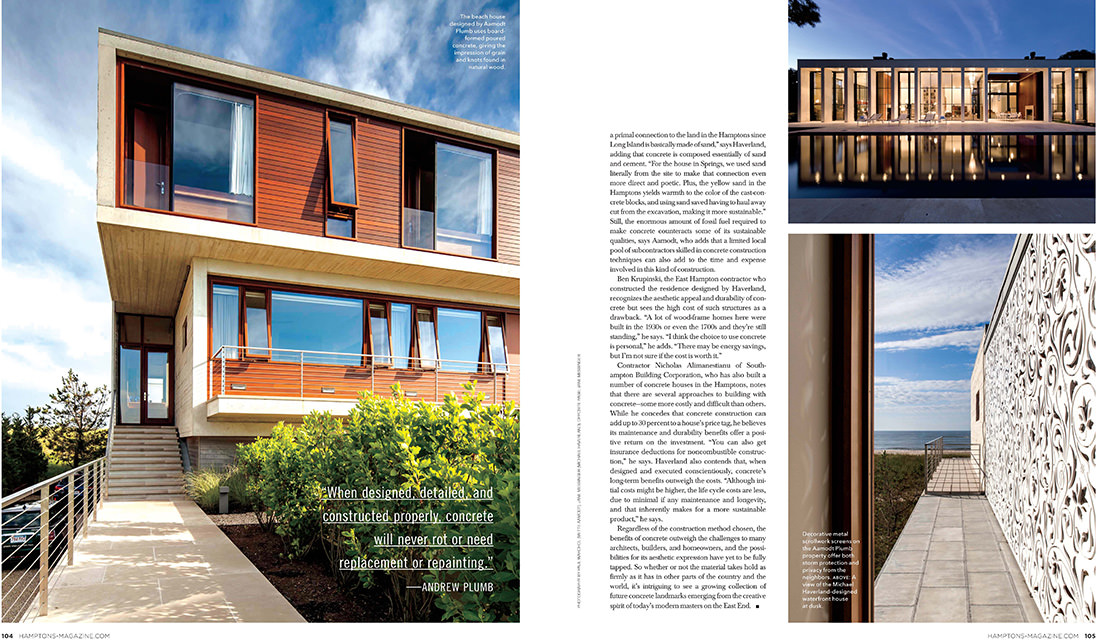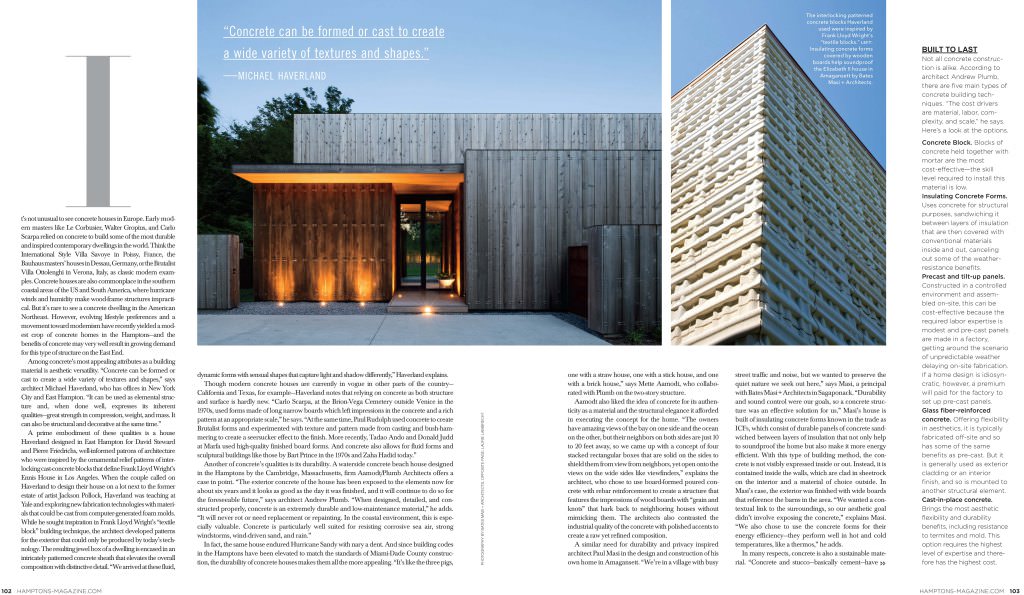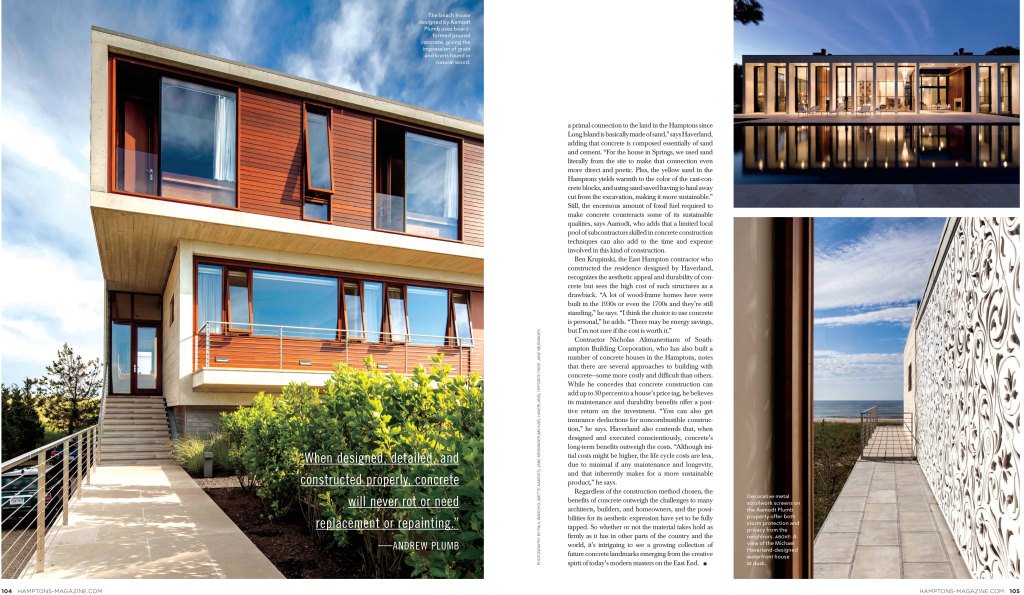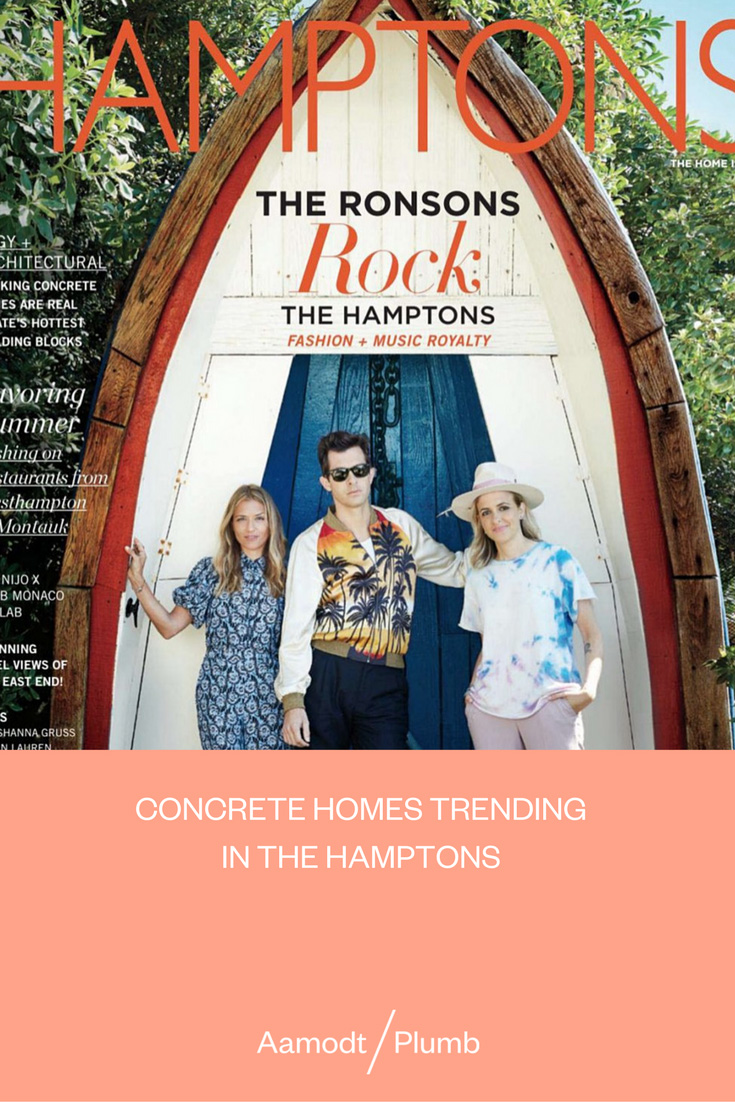
Modern Concrete Homes Trending In The Hamptons
Our project, the Hamptons Beach House, was featured in “Why Concrete Homes in the Hamptons are Gaining in Popularity” by Jean Nayar for Hamptons Magazine, Home Design Edition 2016. An excerpt has been reprinted below.
Why Concrete Homes in the Hamptons are Gaining in Popularity
Concrete houses are gaining favor on the East End for their durability, low maintenance, and aesthetic versatility.
It’s not unusual to see concrete houses in Europe. Early modern masters like Le Corbusier, Walter Gropius, and Carlo Scarpa relied on concrete to build some of the most durable and inspired contemporary dwellings in the world. Think the International Style Villa Savoye in Poissy, France, the Bauhaus masters’ houses in Dessau, Germany, or the Brutalist Villa Ottolenghi in Verona, Italy, as classic modern examples. Concrete houses are also commonplace in the southern coastal areas of the US and South America, where hurricane winds and humidity make wood-frame structures impractical. But it’s rare to see a concrete dwelling in the American Northeast. However, evolving lifestyle preferences and a movement toward modernism have recently yielded a modest crop of concrete houses in the Hamptons—and the benefits of concrete may very well result in growing demand for this type of structure on the East End.
The Durability of a Concrete Home
[One] of concrete’s qualities is its durability. A waterside concrete beach house designed in the Hamptons by the Cambridge, Massachusetts, firm Aamodt/Plumb Architects offers a case in point. “The exterior concrete of the house has been exposed to the elements now for about six years and it looks as good as the day it was finished, and it will continue to do so for the foreseeable future,” says architect Andrew Plumb. “When designed, detailed, and constructed properly, concrete is an extremely durable and low-maintenance material,” he adds. “It will never rot or need replacement or repainting. In the coastal environment, this is especially valuable. Concrete is particularly well suited for resisting corrosive sea air, strong windstorms, wind-driven sand, and rain.”
In fact, the same house endured Hurricane Sandy with nary a dent. And since building codes in the Hamptons have been elevated to match the standards of Miami-Dade County construction, the durability of modern concrete homes makes them all the more appealing. “It’s like the three pigs, one with a straw house, one with a stick house, and one with a brick house,” says Mette Aamodt, who collaborated with Plumb on the two-story structure.
The Aesthetic of a Concrete Home
Aamodt also liked the idea of concrete for its authenticity as a material and the structural elegance it afforded in executing the concept for the home. “The owners have amazing views of the bay on one side and the ocean on the other, but their neighbors on both sides are just 10 to 20 feet away, so we came up with a concept of four stacked rectangular boxes that are solid on the sides to shield them from view from neighbors, yet open onto the views on the wide sides like viewfinders,” explains the architect, who chose to use board-formed poured concrete with rebar reinforcement to create a structure that features the impressions of wood boards with “grain and knots” that hark back to neighboring houses without mimicking them. The architectsalso contrasted the industrial quality of the concrete with polished accents to create a raw yet refined composition.
Regardless of the construction method chosen, the benefits of concrete outweigh the challenges to many architects, builders, and homeowners, and the possibilities for its aesthetic expression have yet to be fully tapped. So whether or not the material takes hold as firmly as it has in other parts of the country and the world, it’s intriguing to see a growing collection of future concrete landmarks emerging from the creative spirit of today’s modern masters on the East End.








